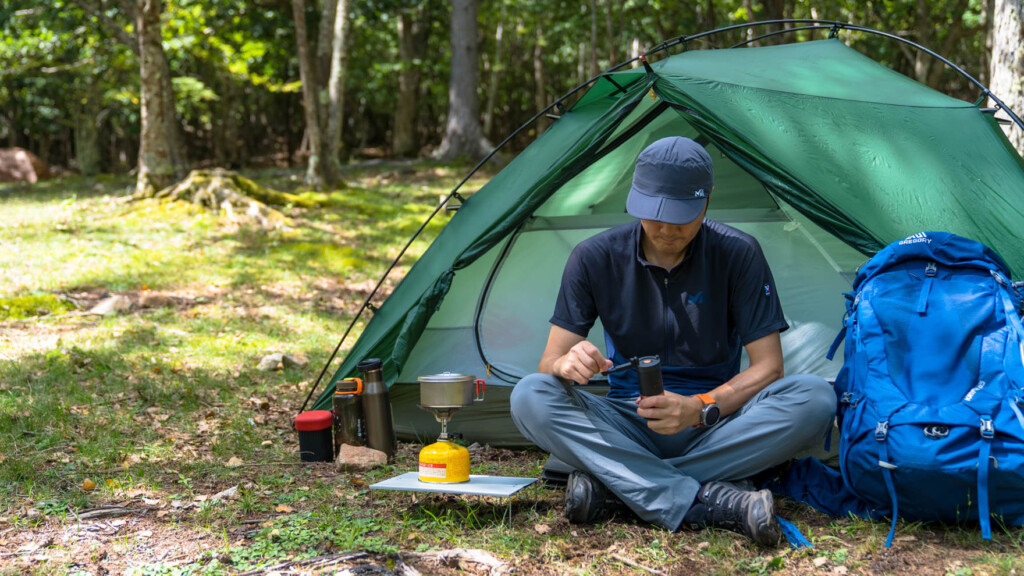
To enjoy the most freest mountain climbing, solo climbing without any worries. 10 things I've been focusing on as a solo climber for the past 10 years
Due to the impact of the COVID-19 pandemic, we have started to see a lot of talk about mountain climbing alone, such as solo mountain climbing and solo hiking.
Until about 10 years ago when I was a student and I used to climb mountains as a hobby, I was mainly climbing mountains with my friends, but since I started running this site, I have been getting into the mountains on my own, and for the past 10 years, solo hiking has become a normal mountain climbing style for me.
The appeal of solo climbing is that you can face yourself and nature one-on-one.
Solohike has the freedom to "deciding on actions at your own pace" no matter what. For me, who often takes photos, it's nice to be able to freely turn the shutter without making anyone wait. Of course, there are many charms that can only be found in group mountain climbing, but the sense of fulfillment and accomplishment that can only be achieved by facing nature one-on-one without being interrupted by anyone (including both fun and difficulties) is a unique charm that you will never experience when climbing a group. Even if it wasn't during the COVID-19 pandemic, it is also clear that solo climbing has captivated many people.
Behind the fun, there are many dangers lurking in the solo mountain climbing
However, it was also true that this so-called "single-tracking" was not something that was recommended to others since ancient times, and as a rather sane style for beginners and skilled healthy legs, it was difficult to say that it was a behaviour that would be allowed to go away. There are many reasons, but one of the biggest reasons is the high risk. According to recent statistics on mountaineering people, the proportion of deaths and missing people in single mountaineering is more than twice as large . The numbers also reveal that solo climbing is a mountain climbing style with a very high chance of reaching the worst case scenario once an accident occurs. Even if it were just a two-hour hike, there's nothing more dangerous than being alone in the mountains.
However, I feel that solo hiking is a style that suits me, and as someone who is fascinated by solos, I think that anyone who wants to try it should try it out should try again and again. But at the same time, not everyone can start casually, must face every solo hike. That's why it's important to know the risks behind this enjoyment and be prepared for them.
So, this time, I'll put together a summary of what I've made so far to enjoy solo climbing safely, along with various new safety measures that have been updated through the evolution of technology. I don't think "this is the right answer," but I hope this will be of some help to daredevil adventurers who want to try climbing the mountains by themselves.
table of contents
- 10 things I strive to make solo hiking safe and enjoyable
- 1. Choose a popular route with many people or a route that's easy for you
- 2. Collect information on the route you are walking in a thorough manner
- 3. Check out the "must-have items" you can carry without conditions for any mountain hike
- 4. Carry a satellite communicator or beacon
- 5. Master the tools in advance and know how to repair and alternatives in case they become unusable.
- 6. Submit your plan in advance (tell someone where you're going)
- 7. Check the local weather
- 8. Be prepared to allow flexible changes to your plan
- 9. Get insurance
- 10. Know basic first aid methods (carry an emergency handbook)
- Minimize risks and enjoy your own mountain to your heart's content.
10 things I strive to make solo hiking safe and enjoyable
1. Choose a popular route with many people or a route that's easy for you
In order to climb a mountain, in any case, you start by thinking about where to go. I think this is also related to the fact that in my case, I often go on a "job" to climb on my own, and to review items, I usually choose a route I've walked before, or a route that's likely to be popular and have many other hikers, or a predictable route that has many reliable records and information.
Why should you choose a popular route?
Popular trails are generally well-tracked and safe, with guideposts and other measures being maintained, there is less chance of getting lost, and there is a high chance that other hikers will be able to find them in the unlikely event. Conversely, if you are not popular, the trails are rough or confusing, and you won't pass by people, so you're less likely to be asked for help. Even if it is not a popular route, we recommend choosing a route you have taken at least, or a route that you can be sure that you are below your level of ability.
It's true that walking on a quiet trail with no sign of others at all is the real joy of solo climbing. However, the first thing you need to ensure when climbing a solo mountain is safety, and the next thing you can enjoy. Even if you pass people a little, you won't notice it right away, and even if it's a path you've walked before, nature will always look and feel different.
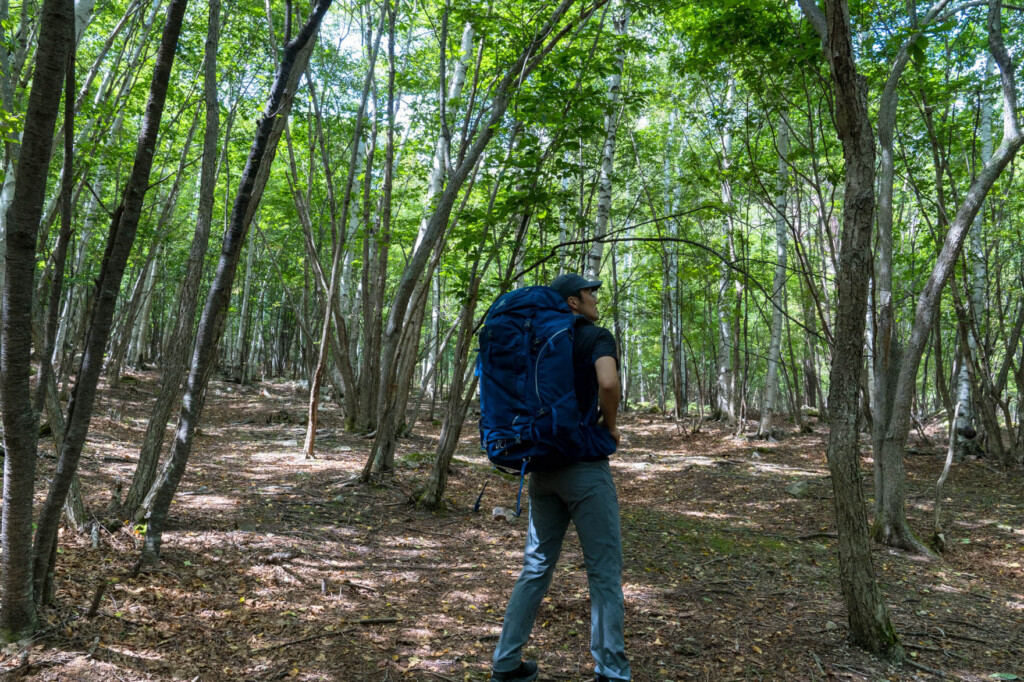
The nearby low mountains seem easy, and sometimes you may find yourself getting lost.
2. Collect information on the route you are walking in a thorough manner
Once you have selected a candidate for the climbing route you are about to walk, the next thing you'll do is "do thorough research" until you're satisfied. It is no exaggeration to say that whether or not the mountain hiking will go well depends on this stage, and I try not to slacking off any corners here. When planning, try to find a thorough look for information, using all the available resources to get an overview of every corner of the route, even if it's a two-hour round trip hike.
Searching for route guides and mountain hiking records online
Search for search terms such as "Mountain climbing route name: ○ Month" to see if there are any records of people following the same path in the past. The places where information gather differ depending on the era, such as Facebook groups and YouTube, are collected differently, so we use a means of collecting a lot of information at any time.
In addition, paper is fine, but it's easy to use, so check the route using online map services (for example, Yamareco's "Mountains and Highlands Maps"). Understand the route's course time, major landmarks, dangerous areas, water points, huts (manned or unmanned), tent sites, forks, etc., and understand the surrounding conceptual diagram, including the routes connected there (although I will explain later, I will always purchase a paper "Mountain and Plateau Map" with the route listed before I go and carry it with me on the day). It would also be ideal to be able to grasp the terrain you are walking in three dimensions, such as imagery of ridges and valleys from the topographic map.
They then search for records of people of the same level walking "the same route" in the past "at the same time." This way you will not only get simple guided facts, but you will get more realistic information when you are actually walking. Information on snow from autumn to winter and winter to spring is especially valuable. By the way, as a paid Yamareco member, I download GPX data and load it onto my smartphone map if possible through mountain climbing, such as river climbing or backcountry skiing, and check to make sure that I have missed the route at the crucial point of the site.
You may also contact the site directly
Another analog method is to call the mountain hut directly if possible to ask about the trail and weather conditions. Most administrators are kind and will provide you with valuable real-time information that is only available there.

The climbing map is packed with a wealth of information, not only on routes, but also on course times, huts, and water points.
3. Check out the "must-have items" you can carry without conditions for any mountain hike
I carry around with me essential tools in case of emergency so that I can safely descend to the mountains while I'm on the mountain. In most cases, you end up going down the mountain without using it at all, but of course these were not useless, I think it was because I had the confidence and security that "even if there was an accident, I wouldn't die."
Although some of the lists listed here may vary slightly depending on the plan, they are almost the same for any season and activity. Of course, there have been some cuts or added due to technological advances, and will be updated in the future as we look at it.
List of items you will always carry around when climbing a solo mountain
- Paper topographic map and compass
- whistle
- Emergency seat (sleep covers and zelts are also available depending on the mountain hike)
- Headlamp
- First Aid Kit (Contents vary slightly depending on the plan)
- Firearms such as stoves (so that at least lighters and matches can warm up in emergencies and smoke signal)
- Knifes and repair tools (Jutoku knives and multitools)
- Spare water (always have some clean water separate from drinking water)
- Emergency food
- Spare batteries/batteries (for headlamps and smartphones)
- rain gear
- Thin pull (2mm x 10-30m)

Part of the essential items set. Even though these are rarely used, they are a must-have amulet for whenever necessary.
Paper topographic maps and compasses are often neglected
Of these, the one that tends to be lazy is a paper topographic map. Many people may have become completely used to digital maps over the past few years, but it's important not to overly rely on smartphones. The smartphone I rely on could suddenly break, submerge, lose, or lose battery for just a moment. For this reason, it is recommended that you always carry a paper map when you enter a mountain (especially when traveling for a long period of mountain hike or deep in the mountains).
Of course, you need to not only bring it with you, but also know how to read and use maps and compasses. Access various resources to learn reading skills, including books, online and offline courses, and be sure to master the minimum usage.
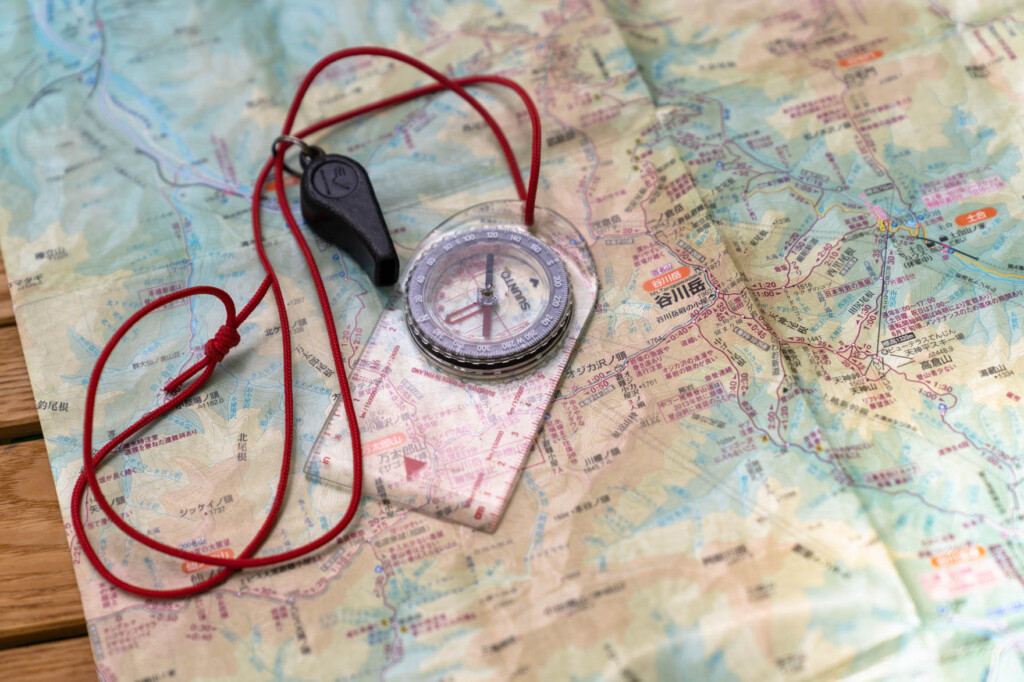
Even if your smartphone GPS stops, you can rest assured that you have a topographical map and a compass. We recommend carrying it with you on paper when climbing solo.
4. Carry a satellite communicator or beacon
Satellite communicators, which can use satellite communication to send messages and location information even in places where mobile radio signals are not reachable, and to send SOS signals, are popular in North America and other countries, and are one of the gadgets that I personally find wondering why it is not even more widespread among people who climb mountains in Japan.
I have Garmin inReachMini's minimum plan and search and rescue insurance. Even if you combine it with this, it's cheap if it saves your life no matter where you're in the world, for less than 2,000 yen a month (and if you have a budget, there are no limits to text messages and real-time GPS information sharing functions). Moreover, if you are going to do solo climbing, this service should be considered more seriously.
Instead, it seems that transmitter services such as "Kokoheri" are becoming more popular in Japan, and I use them as a source of conversation. However, the mechanism of the Coco Helicopter is a membership-only search helicopter service that receives signals from the transmitter from up to 16km away, and narrows down the search, making it easier to spot during searches. To start the search, you will have to request rescue using your cell phone or something, and if you are in a place where the signal is out of reach of the signal, of course, your family or other person will have to ask you to search. In that sense, it costs a bit of money, but if you are prepared to climb a solo mountain, I recommend a satellite communicator (or is it safest to have both).
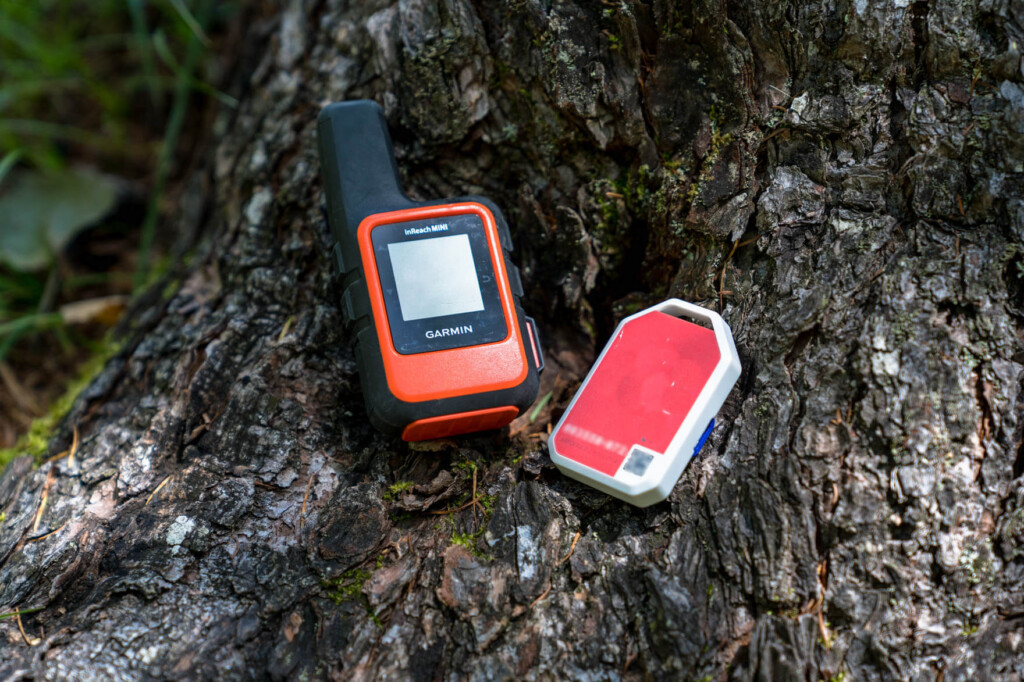
5. Master the tools in advance and know how to repair and alternatives in case they become unusable.
If you are climbing with someone, you may be able to borrow it if you forget the tool, it can't be used, or it breaks. But solo climbing is different. No matter what happens, you have to get through it yourself.
To do this, it is dangerous to just say "It's fine because it's just fine." Tools that you don't know how to use are no longer useful on site, no matter how cutting-edge gear you may have. Therefore, at the very least, be sure to consider basic usage and repair methods and alternative methods in the event of a break.
Especially if you buy a new one, make sure you try using it once before entering the trail to make sure it works correctly. You don't want to imagine that when you unfold a new tent, there weren't enough parts.
About repair tools
Even sturdy mountain tools that are intended to be used roughly can eventually rattle and parts may break or deteriorate. Also, be careful when battery-powered items run out of batteries. When climbing solo, take extra care to carry some first aid items, such as spare batteries and repair equipment, so that you can continue to use them to some extent.
Among them, cloth duct tape (adhesive tape) is the most useful repair item to date. The key is that it can deal with a surprising range of accidents, such as when fabric or parts are damaged, the sole falls out, or when the adhesion of the ski sticker is lost, or when the hole is blocked, and the hole can be blocked. Furthermore, duct tape can also be used as an excellent fire starter, so I carry it with me whenever possible, such as a water bottle, trekking pole, or lighter. I've seen people use tape as a substitute, but for now I always bring duct tape, which is versatile and adhesive. If you have more space, you can rest assured that there are threads, needles, cable ties, etc.
Also, if you have hard and heavy tools such as ski equipment or snowshoes in the winter, wire and pliers are required to repair them. Pliers alone are heavy and bulky to carry around, so it's difficult to tell them to carry them with you. For this reason, I am definitely a Leatherman fan with the compact "SQUIRT PS4" with pliers, knife and scissors.
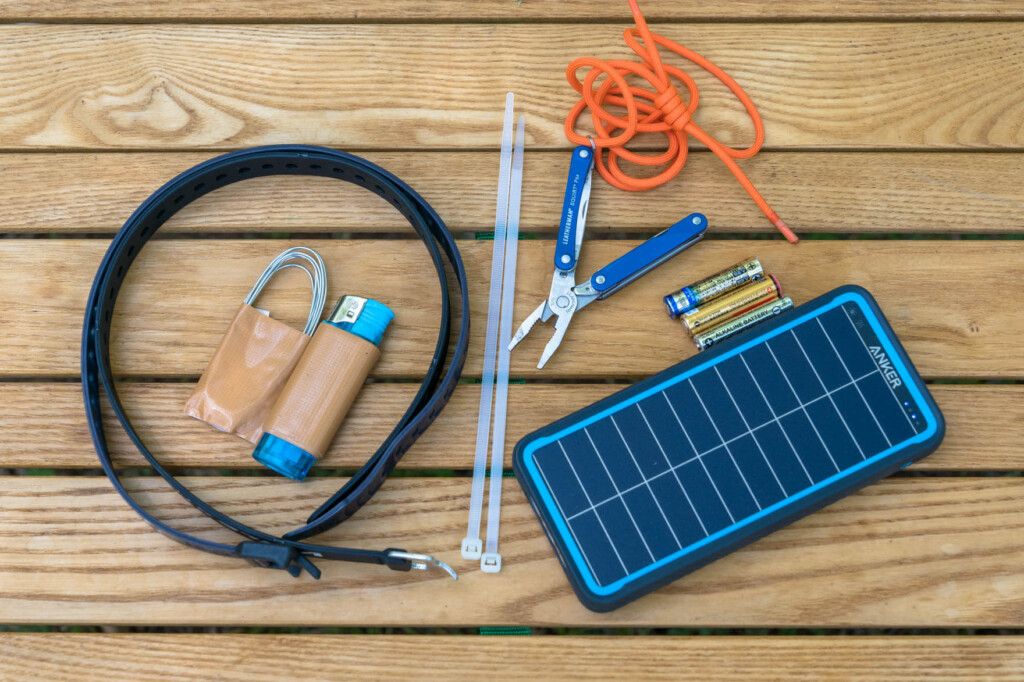
Spare and repair products such as spare batteries, adhesive tape, cable ties, knife, wire (plier) are designed to be versatile and portable.
Be sure to know how to use a gas stove, which can lead to serious accidents if handled incorrectly.
Gas stoves that many people use when hiking in tents, etc. are often used by gas stoves, and are surprisingly easy to overlook because they are tools that are an extension of daily life.
However, while climbing stoves with a compact size and powerful firepower are extremely convenient, they are also dangerous tools that can lead to major accidents if used incorrectly. Instead of using it for the first time on site, be sure to try the correct handling methods before you leave.
Below is a video that summarizes the correct usage and precautions for outdoor gas stoves created in 2020. If you look at it again, not only for first-time users but also for those who haven't, you may discover something surprisingly.
You don't notice, but be careful of "carbon monoxide poisoning," which is the danger of death right next to you.

Avoid using gas equipment indoors such as tents.
Another thing you need to know when working with a gas stove carbon monoxide poisoning .
When gas equipment is used in a place with poor ventilation, such as inside a tent, the oxygen required for combustion will be insufficient, causing incomplete combustion, resulting in carbon monoxide. Inhaling it can block the transport of oxygen by the blood, causing cells and tissues throughout the body to become oxygen deficient, causing various symptoms, and in the worst case scenarios, killing you. This carbon monoxide poisoning .
What's troublesome is that carbon monoxide is "colorless and odorless," making it difficult to tell whether it is occurring or not, and the subjective symptoms of carbon monoxide poisoning are early in the early stages, and it is generally similar to those of the common cold (influenza) making it difficult to notice that you are currently in a dangerous state. If it progresses to moderate or severe, it is too late as it will no longer be able to move on its own. This is why carbon monoxide poisoning is said to be a "die disease that will eventually lead to death."

To avoid such troublesome and terrifying carbon monoxide poisoning, all you need to do is not create a situation where carbon monoxide is produced. Be sure not to use gas equipment in tents, cars, or other enclosed indoors just because it's cold outside. If you experience any symptoms that may be on top or you may find yourself feeling strange, try to move to a place with fresh air immediately.
Don't forget to check the deterioration of parts such as O-rings

It is hard to notice deterioration of the O-ring, but it is necessary to check whether it has deteriorated.

[O-ring photo] The left side is an O-ring that has deteriorated over time. The surface is damaged, loss of elasticity, and pressure prevents the mold from returning. The difference between the normal O-ring (right of the photo) is obvious.
When using a gas stove for many years, one thing that I tend to forget is the deterioration of the O-ring. An O-ring is a rubber ring attached to the part that connects the gas appliance to the gas cartridge, and is a consumable item that deteriorates over time even if it is not used.
If some parts are broken, slit, or cracked, it could cause gas leaks in the worst case scenario, so be sure to check this before hiking, and replace it if there is any damage.
If you experience abnormal noises or odors while the gas cartridge is installed, do not use it, and if there is any abnormality, consult the dealer or manufacturer. Also, you must not use anything other than the original O-ring specified by the manufacturer. Even if you have replaced the O-ring, the item may have a lifespan and may have an invisible deterioration. We recommend replacing your stove after 10 years.
Before you buy! Does the burner have the "PSLPG mark"?
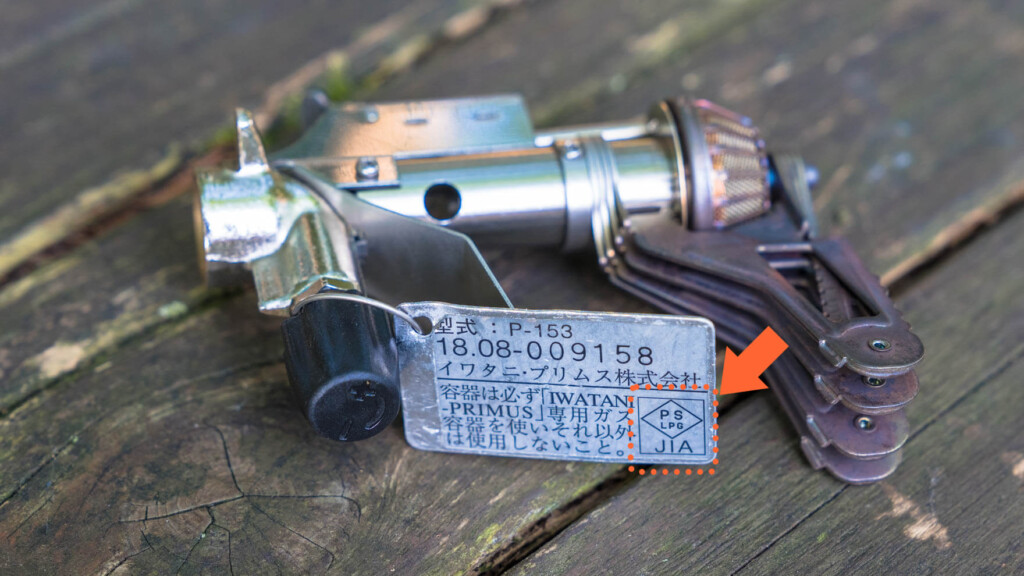
The PSLPG mark is included and displayed on the product itself, so please check with the store to see if it has been obtained before purchasing.
The "PSLPG Mark" is a mark that passes strict inspections and meets the national gas stove standards set by the government. In other words, products with this mark are proof that they have passed the inspection stipulated by law. However, in recent years, many imported products that have not acquired the "PSLPG Mark" have been circulated, mainly on the Internet.
Of course, even if this mark is attached, it cannot be said to be 100% safe unless each person uses a gas stove correctly, but products that do not have one are products that have not passed the inspections set by law. To ensure safe mountain climbing, make sure you have the "PSLPG mark" before purchasing (if you're not sure if there is a mark, ask the store staff).
6. Submit your plan in advance (tell someone where you're going)
Whether you are climbing solo or party climbing, it is a minimum requirement for all mountain climbing to prepare a mountain climbing plan (mountain climbing notification) in advance and submit it to the appropriate location. Of course, it is to clarify your own mountain hiking plan, but most importantly, it is an important source of information for police and others to carry out search activities in the event that they are lost.
In addition to those minimal etiquette, don't forget to make a basic statement that before you go to the mountains, be sure to tell people close to you which mountain you are going to and when you will return (though the more detailed it is, the better). Don't assume that mobile phone signal is constantly reaching the trail.
The danger of going to the mountains without telling anyone the day you're heading back
127 Hours is a film from 10 years ago, but it tells the story of a man who goes on a hike alone in the desert of Utah (even though it was a familiar trail) and accidentally slips into a crevass, his arm is trapped and becomes unable to move. This film is packed with intense lessons about the tragedy that caused by not telling anyone where they were to go. To avoid becoming like the main character of this movie, no matter how quickly you rush before climbing, don't forget to say something like, "I'll be heading to Mt. ●● on the day of the day."
It's convenient because you can do everything in one place with a digital mountain climbing plan.
Incidentally, mountain climbing plans that were previously mailed in a mailbox and filed with the police have finally evolved recently. For example, "COMPASS" allows you to create and submit mountain climbing plans on a digital basis. In addition, it has a function to share the plan with others and notify people who have designated a descent notification by email, which has been a constant source of help these days. Furthermore, by using satellite communicators such as Garmin inReach and the "measure function" of the smartphone app "YAMAP", you can inform your family and acquaintances of your location while climbing in real time, so there are far more ways to ensure safety when climbing solo.
In any case, when hiking alone, it is very important to let someone know where and how safe they are, such as whether they have descended safely and where they are. No matter how experienced a hiker is, make sure you come face-to-face with the assumption that unexpected accidents will always occur.
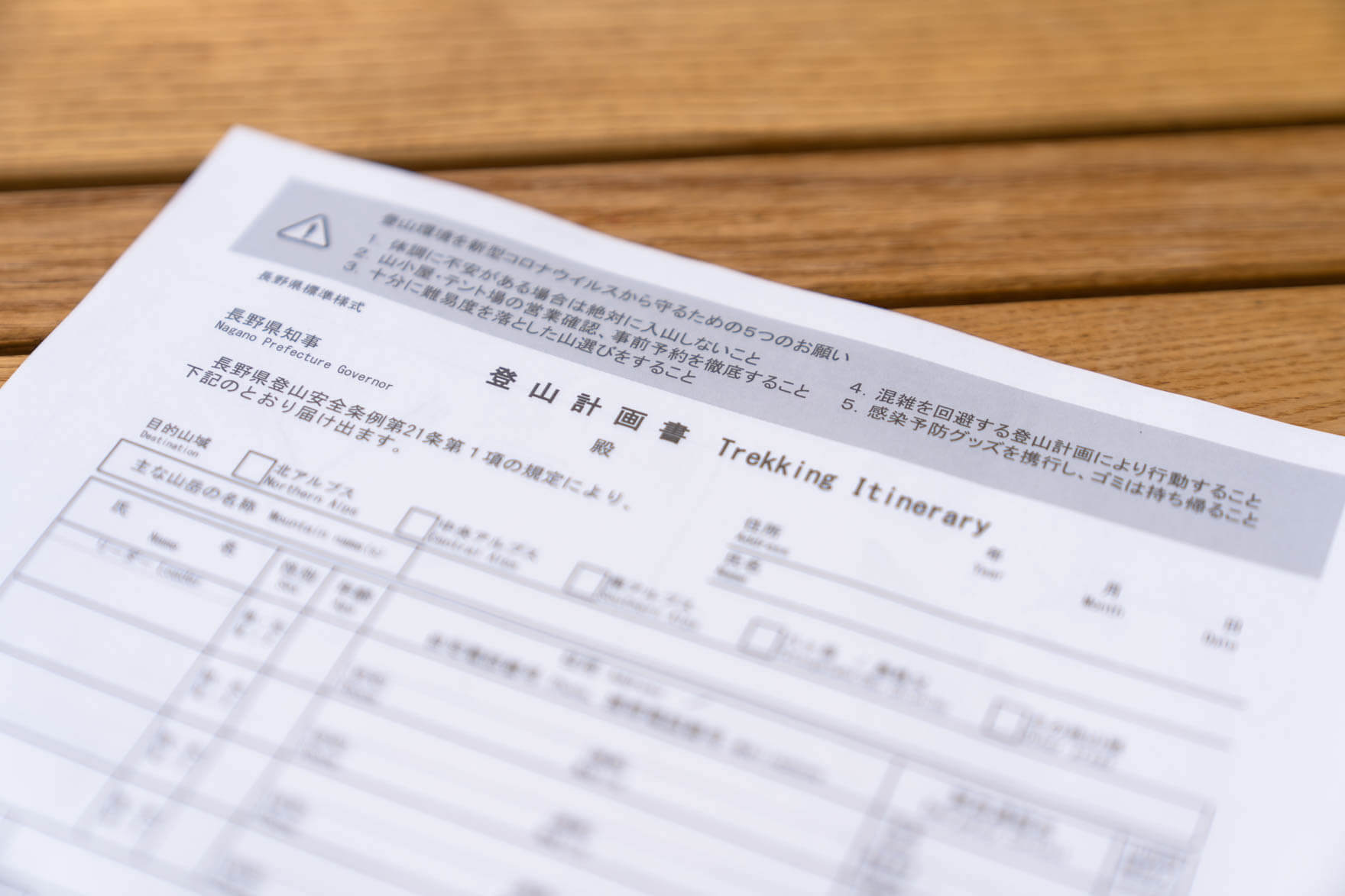
The climbing plan is the last lifeline to protect yourself.
7. Check the local weather
It's obvious, but before I enter the mountains I always check the local weather. As the phrase "weather disaster" suggests, hiking in bad weather is a much more dangerous thing than usual, and you should never go to it if you're a solo artist. Even if you're lucky enough to go, there's more harshness than fun to remember.
Check the forecast above the mountain for weather forecast
The weather forecast is not enough for those in the foothills, so we will check the weather, temperature and wind strength of the mountains we climb as much as possible. In my case, I check the city's weather and weather forecasts on a regular weather forecast site, while also checking mountain weather forecasts using Mountain Weather Forecast (Paid Members)" and " Forecast In addition, during snowy season, we search for high-rise weather maps and other snowfall information as appropriate.
I would also like to acquire knowledge about weather maps.
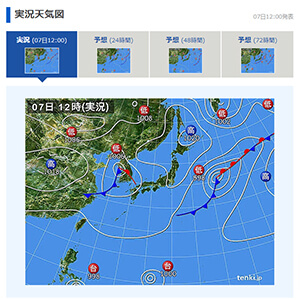 By the way, it is important to check the weather forecast by a professional, but if possible, if you have knowledge of weather maps at the same time, even if you check the same weather forecast, the resolution of the information you can obtain will be different. If you have knowledge of the weather conditions that are the basis for weather forecasts, you can predict the most recent future weather, including the possibility of sudden changes in the weather afterwards, temperatures and winds, and other areas that cannot be seen by the weather forecast mark. If you're going to climb a solo mountain, you should read at least some books on the weather. Once you can understand the view of the sky, which predicts the most recent weather from the shape of the clouds, you'll be a full-fledged person.
By the way, it is important to check the weather forecast by a professional, but if possible, if you have knowledge of weather maps at the same time, even if you check the same weather forecast, the resolution of the information you can obtain will be different. If you have knowledge of the weather conditions that are the basis for weather forecasts, you can predict the most recent future weather, including the possibility of sudden changes in the weather afterwards, temperatures and winds, and other areas that cannot be seen by the weather forecast mark. If you're going to climb a solo mountain, you should read at least some books on the weather. Once you can understand the view of the sky, which predicts the most recent weather from the shape of the clouds, you'll be a full-fledged person.
Especially from autumn to winter, the mountains suddenly turn into harsh winter mountains due to unseasonable snowfall. As someone who has suffered many times before, I can't help but be nervous about hiking alpine trees at a time like this.
8. Be prepared to allow flexible changes to your plan
No matter how carefully you research the route you are walking, if you actually go to the site on the day, you may not be able to get through the path. It is not uncommon for people to go as expected when climbing, such as when it is not likely that they will be able to descend within the time limit, when the weather is likely to change suddenly and you have to go down the mountain immediately, or when you are unable to walk at the scheduled pace due to an injury or other reason, it is not uncommon for people to go as expected when climbing.
Assume subroutes and escape routes
By preparing the process flexibly in case of such an emergency, you can rest assured that you will not be panicked or stuck on the site. In the world of mountain climbing, the route that allows you to reach the safest place (such as a mountain hut, bivouac, or descent) in the shortest time is called the "escaping route," and the other routes used in accordance with the situation during the process from start to finish are called the "subroot."
When climbing solo, it is more important to have multiple plans tailored to your abilities than to gain more stamina.

If you can thoroughly research and take multiple routes flexibly according to the situation, you will be able to act more safely.
9. Get insurance
This is not just a solo party climb, but one thing you should definitely enter if you are going to climb a mountain.
In the event of an accident, rescue operations, including searches by civilian helicopters, can cost a large amount of money. If they are not insured, even if they can survive safely, they will be heavy, and if the victim dies, the enormous costs will fall on the survivors (and unfortunately, if no one is found, they will not be considered dead for seven years, so the family will not even be able to receive the survivor's pension or death insurance). It goes without saying that, but the basic premise when doing mountains is to get mountain insurance without hesitation.

An accident during a solo climb can easily lead to fatal accidents. Anyway, be sure to get mountain insurance.
10. Know basic first aid methods (carry an emergency handbook)
The last thing to keep in mind when climbing solo is to carry a first aid set, which is also mentioned in the essential list above, in case of injury or illness, and have knowledge of first aid methods (first aid). If possible, we recommend taking some kind of first aid seminar before you head out for your first solo hike. It's great for training related to mountain climbing, but first aid courses from a disaster prevention perspective have been held frequently in the city since ancient times. However, if you still accept it and are not there, you will feel a different sense of security, such as not panic in an emergency.
If you don't have the time to do this and you're not confident in what to do in the unlikely event, a rescue handbook for mountaineering is a shame, so by being prepared to avoid any loss of anything happening on the ground, you can deal with the various incidents you encounter on the mountain without panic.
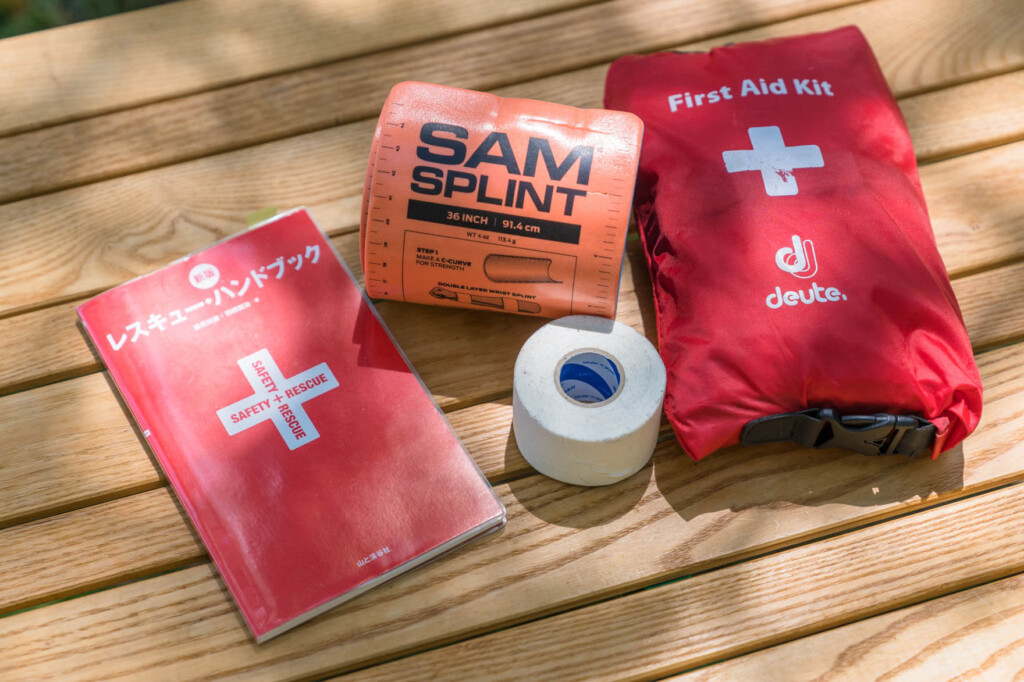
One of the essential equipment is a first aid kit for first aid for injuries, such as band-aids and taping, and a thumbsprint that can be used as a splint for sprains and fractures. If you're worried, you can carry a thin handbook.
Minimize risks and enjoy your own mountain to your heart's content.
Even mountaineers with far more experience and skill than themselves have been suffered from numerous accidents and accidents. Since each person is pushing their limits, this may be inevitable. No matter how hard you try and pay attention to an accident, everyone should consider it inevitable. This time I wrote about my own case about how to prepare yourself for solo climbing, but this is not the perfect solution for anyone, and there is no rule that you should not enter the mountain unless you do this. Use this as a reference, don't overdo it, don't try too hard, and gradually increase the number of places you can walk in, and enjoy solo hiking at your own pace.
Supervised by: Japan Gas and Petroleum Equipment Manufacturers Association → https://www.jgka.or.jp/index.html



 Lighter, safer, smarter. A list of cooking tools to take to climb a tent and how to choose one (basic)
Lighter, safer, smarter. A list of cooking tools to take to climb a tent and how to choose one (basic) [Archive] 20 points you should know to use gas equipment more safely and conveniently
[Archive] 20 points you should know to use gas equipment more safely and conveniently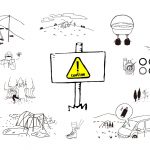 [Wait a minute for that action!] ] Summary of NG behaviors that you tend to do when climbing or camping
[Wait a minute for that action!] ] Summary of NG behaviors that you tend to do when climbing or camping